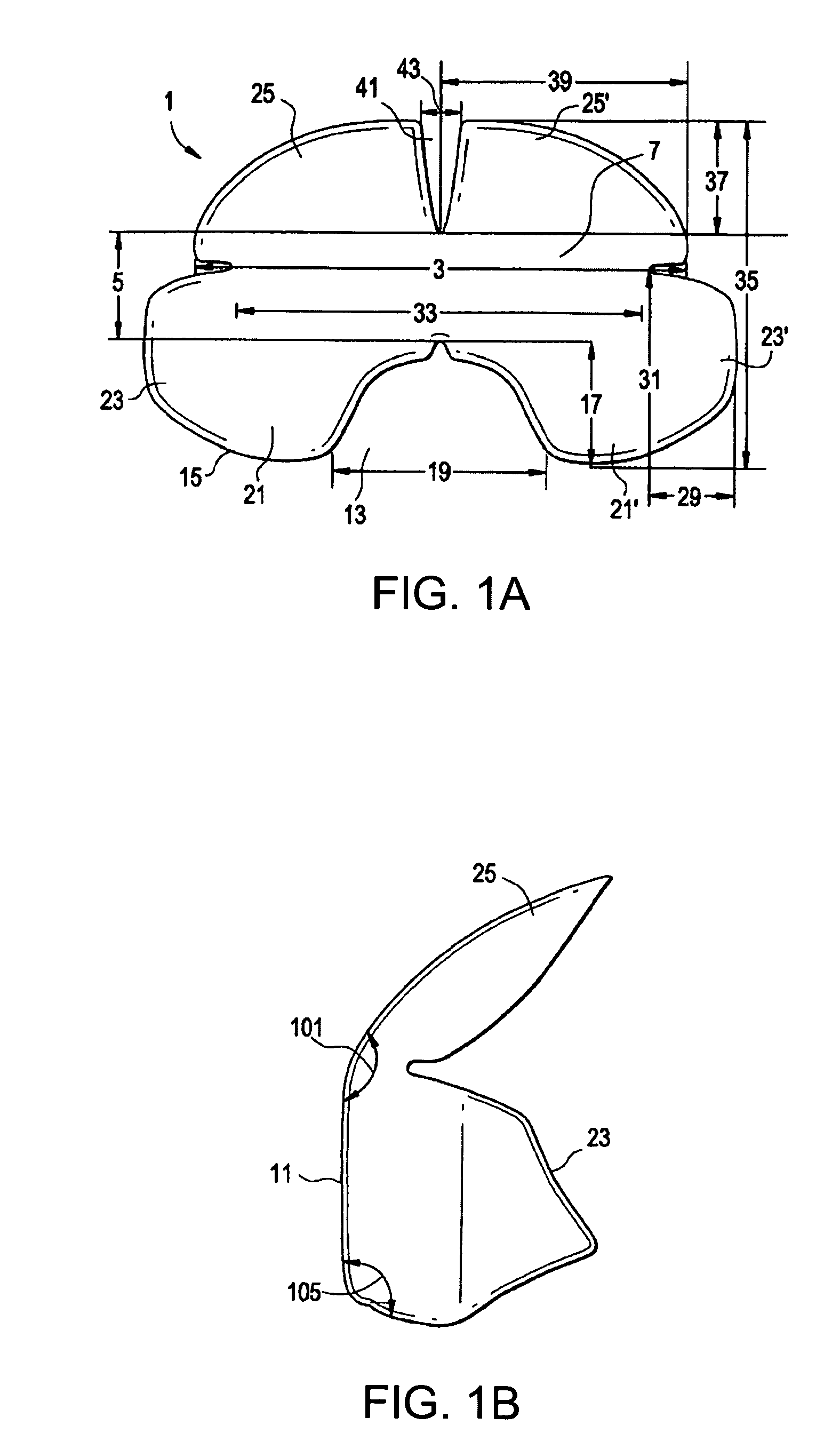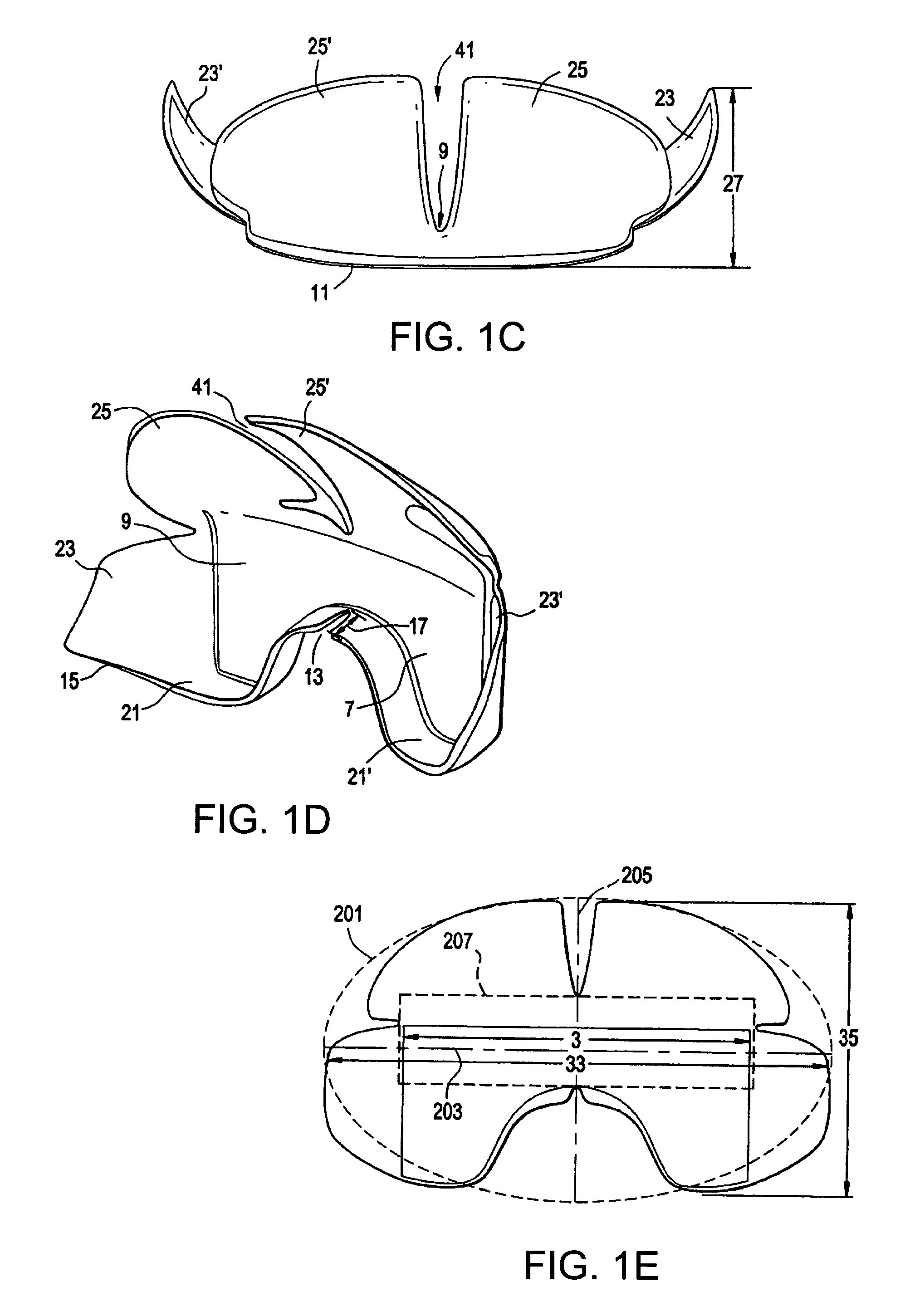Contoured elastomeric barrier for bowel retention and method of use
a bowel retention and elastomeric technology, applied in the field of bowel retention elastomeric barrier, can solve the problems of formation of adhesions, time-consuming packing procedures in the operating room, waste of time and resources for surgeons, etc., and achieve the effect of preventing sticking and great rigidity
- Summary
- Abstract
- Description
- Claims
- Application Information
AI Technical Summary
Benefits of technology
Problems solved by technology
Method used
Image
Examples
example 1
Manufacture of a Device of the Invention
[0090]The prototype device of the invention was cast using a combination silicone and Plaster of Paris™ mold. PDMS Sylgard® 186 was used to increase tear resistance of the device. The main body of the device was reinforced with PDMS Sylgard® 184 to prevent buckling upon application of shear and transverse forces by surgical retractor blades. The current prototype was scaled to fit a medium-sized human adult based on dimensions obtained from anthropologic data of pelvic size distributions.
example 2
Material Testing Results
[0091]Two exemplary materials were tested to select the better material and the appropriate ratio of cross-linker for casting of a prototype. The device of the invention can be made of any elastomeric material having the desired elastic modulus, compression, and tear resistance and strength that can be sterilized, and that is preferably clear or at least translucent. Determination of properties of materials for making the device in the invention can be determined empirically using routine methods such as those provided below. Alternatively, the properties of the materials are commonly provided in catalogs, specification sheets, technical bulletins, and other manufacturer's information. Preferred materials for use for the device of the invention have a Young's modulus between 0.1 MPa and 10 MPa and a yield point of 250 KPa-5 Mpa. Materials should be tear resistant when subjected to 100 N of shear force. A single round of sterilization should not cause the mate...
example 3
Porcine Testing Results Comparing Laparotomy Packs to a Device of the Invention
Bowel Packing Time
[0098]The time required for application of the device as well as its effectiveness in retaining the bowels versus the currently used cotton laparotomy packs was quantified in the porcine animal model. Two pigs were used to test the device's effectiveness. Before applying the device, the surgeon was given only a brief explanation of how the device was to be oriented in the cavity and that bowels were to be packed cephally. Once the pigs were fully anesthetized, a ventral midline incision was made to expose the abdominal contents. The incision was retracted using surgical retractor blades. The time required to apply the device and the cotton laparotomy packs each were recorded for a series of trials of bowel packing with the device or cotton laparotomy packs. As shown in FIGS. 5A and 6B, packing time was significantly decreased through both an 18 cm and a 12 cm incision (80% and 43%, respe...
PUM
 Login to View More
Login to View More Abstract
Description
Claims
Application Information
 Login to View More
Login to View More - R&D
- Intellectual Property
- Life Sciences
- Materials
- Tech Scout
- Unparalleled Data Quality
- Higher Quality Content
- 60% Fewer Hallucinations
Browse by: Latest US Patents, China's latest patents, Technical Efficacy Thesaurus, Application Domain, Technology Topic, Popular Technical Reports.
© 2025 PatSnap. All rights reserved.Legal|Privacy policy|Modern Slavery Act Transparency Statement|Sitemap|About US| Contact US: help@patsnap.com



